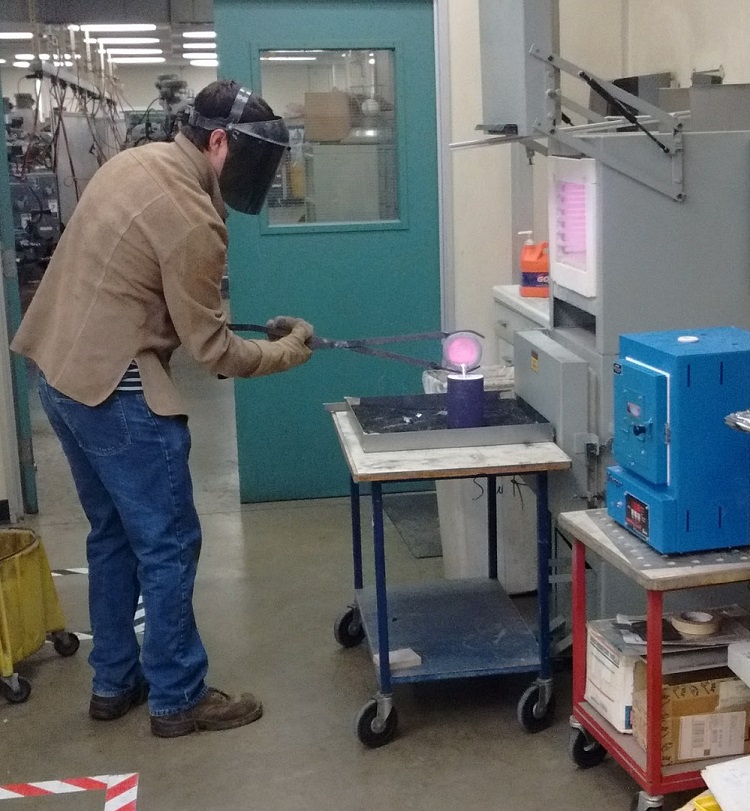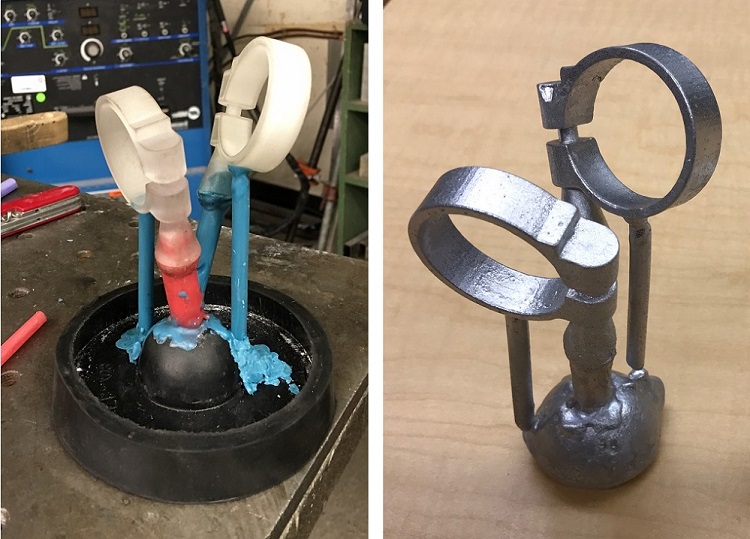Project Objective
This capstone project will create a knowledge base of design guidelines along with the fixtures and systematic procedures to evaluate 3D printed materials made by our sponsor, 3D Systems, for use in traditional investment casting. We are working under a budget of $6,000 and a completion deadline of June, 2017.
Team
The project team is
Customer/Market Requirements
The project sponsor requires the investigation of their 3D printing technology as it applies to traditional investment casting. For this capstone to be successful, the sponsor needs to understand which of their materials are useful in making molds for casting metal. Introducing 3D printing into the investment casting industry is useful because it is potentially a faster and more efficient way to model parts compared to traditional casting methods (tooling metal molds). 3D printing technology requires only CAD skills to model a part which can easily be printed into a model ready for casting. Traditional models are usually sculpted by skilled professionals which can be expensive and time consuming. Another advantage is that 3D printed models made from plastics are also more rigid than wax and can be used to physically fit a part to test to see if the part meets geometric and sizing specifications before the part is actually casted.
Design Challenges
The scope of this capstone project has spanned: CAD modeling, mold making, physical model making, and metal casting, materials testing, and related activities. Our team has focused on three mold-making methods for injected wax parts, and two ceramic mold-making processes for casting metal. Many of these knowledge bases are built on trade secrets and unlocking that understanding has been a hurdle. Metal casting is an ancient technology that requires a level of artfulness to perfect (Figure 1).
The limitation to using 3D printed parts, particularly plastic parts as models for making ceramic molds is that plastic does not burn out as easy and clean as wax. Some major challenges we have faced has been related to our molds exploding during the burnout phase, and getting overall consistent wax models and accurate metal castings. The mold fracture issue has been the most dominant issue that we have recently been able to successfully mitigate by understanding how the material expands during the burnout phase, and designing accordingly.
The other difficulties we have experienced are related to the intricate process of making dimensionally accurate (and defect free) molds and castings. It is outside of the scope of the capstone to master all of the relevant crafts and trades that go into metal casting, but to provide a proof of concept of 3d printing as it is applied to investment casting.
Outcomes
Despite some of the challenges we have faced, we have succeeded in making some finished casted parts by a variety of different mold making techniques (Figure 2). We were able to cast several aluminum parts from both 3D printed plastic and wax. We identified the reason that our molds had been breaking and may have found a way to mitigate it. Although our castings have moderate levels of defects, we have demonstrated the wide applicability of using 3D printing with metal castings. We have demonstrated efficiencies in the mold-making process where 3D printing can be utilized to improve costs and lead times.

